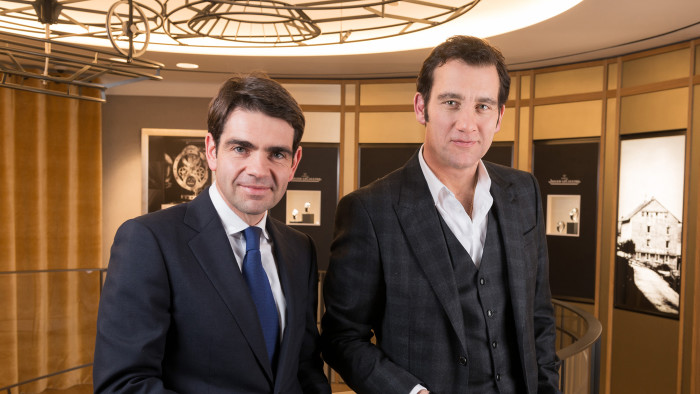Montblanc unveils modestly priced mechanical watches

Roula Khalaf, Editor of the FT, selects her favourite stories in this weekly newsletter.
Montblanc is likely to unnerve its competitors today by unveiling plans to open up the esoteric world of fine watchmaking to a wider market, as it seeks to expand its business.
Led by Jérôme Lambert, the new chief executive appointed in 2013, the German company known for its dominance of the luxury pen market is to implement an aggressive strategy, releasing mechanical watches with high-end complications on to the market at competitive prices.
At the Salon International de la Haute Horlogerie in Geneva this week, Montblanc will launch the Meisterstück Heritage collection, which includes a perpetual calendar watch in a stainless steel case that will retail for €10,000, and a gold monopusher chronograph made entirely by hand in its Villeret workshop for €27,000. Both are uncommonly low prices for watches in their category.
Mr Lambert says: “Montblanc wants to open this world of fine watchmaking to clients that have been taken away from it by the evolution of price over the past five to 10 years.”
He has form in this area. At Jaeger-LeCoultre, which he headed until taking up his new post, he pioneered a pricing strategy that broke with fine-watchmaking conventions. At Montblanc, he is pushing more accessibly priced high-end watches harder still.
The new collection has been taken from concept to delivery in less than six months. In doing so, Montblanc under Mr Lambert has showed how agile a watchmaker can be.
In an industry where significant new collections can gestate for two years or more, the speed at which this collection has been brought to market is an achievement.
Montblanc is the second-largest business owned by luxury holding company Richemont – behind Cartier – and accounts for 8 per cent of the €10.15bn sales reported by the group in its last financial last year.
Mr Lambert was appointed to the role of Jaeger-LeCoultre chief executive in 2002, two years after Richemont bought the company in a deal that included the purchase of luxury watch brands IWC and A. Lange & Söhne.
There he engineered a decade of rapid growth and creativity, as the business trebled in size, earning the Swiss brand its place in the big time. By 2013, Jaeger-LeCoultre was, he says, “mission accomplished”.
Montblanc represents a bigger challenge. The company is spread over four sites across three countries and had sales of €766m in its last set of reports.
According to Mr Lambert, writing instruments make up 45 per cent of the business, leather goods and watches 25 per cent each, with the final 5 per cent attributed to jewellery and other accessories.
“The name of the game is definitely to further the maison, to grow it and develop the activities, some of which are blossoming,” says Lambert. “With leather goods and [watches], we are still in a fundamental period, even though we started doing leather goods in 1926.”
Montblanc’s historic investments in watchmaking have given it an advantage in the industry, and the lion’s share of the company’s recent growth is attributed to its watch business. “It was a smart decision to develop the [Montblanc] manufacture in Le Locle, before many others were even thinking of doing a manufacture movement, and then to acquire Villeret,” he says.
The Le Locle facility was opened in 1997, the same year Montblanc Montre SA was set up. Villeret, as it is now known, was formerly Minerva, a small, ultra-traditional watchmaker bought by Richemont in 2006 and then placed under Montblanc’s management.
It employs 50 people and produces about 50 watches a year. Volumes are so low because the watches are made by hand, a pre-industrial process performed by only a handful of elite outlets worldwide.
“What we do at Villeret is a golden opportunity,” says Mr Lambert. “We have 150 years of history and DNA to develop to further our goal. And it gives us a signature in movement style.
“We have very deep watchmaking expertise at Villeret,” he continues. “We’ll nurture this and use it for further development in other lines. That’s how we’ll meet our ambition to share our passion for fine watchmaking.”
The challenge will be to make this approach profitable. For now, Montblanc keeps costs low by working with third-party suppliers such as Dubois Dépraz, the specialist movement manufacturer behind its new perpetual calendar. But in time Mr Lambert intends to bring all movement manufacturing in-house, a notoriously costly operation.
“We can animate the segment we’re in, in a really intelligent way,” he says. “We can introduce and develop useful complications and functions – classy, high-value product that makes fine watchmaking more open than it is today.”
Comments